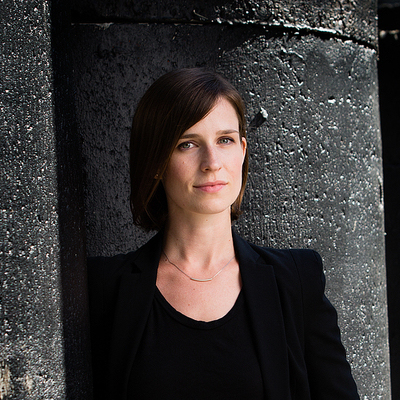In 2016, the media’s usual battle for attention felt more like a war. Fueled primarily by an unprecedented political season, consumers were bombarded with a ceaseless litany of “breaking news,” recycled headlines, fake stories, and social feeds just begging for their next click.
 From an outsider’s perspective (putting print media aside), it would seem like a golden age for the news business. However, those of us in the bunkers know that’s not quite the case. The battlefield has never been more crowded and the challenges, particularly in the digital space, have never been more real. We’ve been fighting against ourselves, and, in turn, we’ve surrendered too much of our territory to the platform and ad tech giants who have increasingly monopolized the larger attention economy.
From an outsider’s perspective (putting print media aside), it would seem like a golden age for the news business. However, those of us in the bunkers know that’s not quite the case. The battlefield has never been more crowded and the challenges, particularly in the digital space, have never been more real. We’ve been fighting against ourselves, and, in turn, we’ve surrendered too much of our territory to the platform and ad tech giants who have increasingly monopolized the larger attention economy.
With accelerated decline in print advertising and an increasingly challenging digital advertising environment, we have to ask what news will look like after advertising.
 Since the rise of the penny press in the United States in the 1830s, advertising has been a central source of funding for journalism. Advertisers were never interested in the news; they were interested in audiences. And the populist penny papers could deliver audiences on a scale like no one else, just like radio and television would later offer large audiences that advertisers had few other ways of reaching. That’s why the advertisers flocked to them.
Since the rise of the penny press in the United States in the 1830s, advertising has been a central source of funding for journalism. Advertisers were never interested in the news; they were interested in audiences. And the populist penny papers could deliver audiences on a scale like no one else, just like radio and television would later offer large audiences that advertisers had few other ways of reaching. That’s why the advertisers flocked to them.

2017 will be the year that news organizations start approaching headlines with the importance they deserve.
 A few years ago, around the time that a scary-exciting new thing called “social” started becoming more important than search engine optimization, digital media organizations discovered that nothing mattered more than headlines, at least when it came to getting stories effectively distributed by social media. Organizations like Upworthy and ViralNova embraced aggressive A/B testing and often wound up with hilarious curiosity-gap headlines, but the bigger lesson was deeper: Putting aside whether or not the curiosity gap worked, the first measure of any headline was how effective it was at driving traffic.
A few years ago, around the time that a scary-exciting new thing called “social” started becoming more important than search engine optimization, digital media organizations discovered that nothing mattered more than headlines, at least when it came to getting stories effectively distributed by social media. Organizations like Upworthy and ViralNova embraced aggressive A/B testing and often wound up with hilarious curiosity-gap headlines, but the bigger lesson was deeper: Putting aside whether or not the curiosity gap worked, the first measure of any headline was how effective it was at driving traffic.
Whether you get your news direct from publications and their apps, or through Google, Facebook, or news aggregating apps, access points to information are increasingly personalized. That is, there is no neutral experience, no standard editorial vision for above-the-fold importance.
 Based on observed and tracked previous behaviors, personalization and recommendation systems make a lot of assumptions about users’ interests and intentions.
Based on observed and tracked previous behaviors, personalization and recommendation systems make a lot of assumptions about users’ interests and intentions.
With the extraordinary change that technology has brought to the news and information landscape, the future of news depends on journalists working alongside smart machines. The first wave of this symbiosis was news automation, where artificial intelligence systems generate written stories and alerts directly from data. The goal is not to displace journalists from their jobs — it’s about freeing up their time from labor-intensive tasks so they can do higher-order journalism.
For those of us in journalism, media, and political communication who’ve spent the last decade touting the democratic possibilities of digital technologies, 2016 has been a tough year.
 Critical of the dangers of the consolidation of media ownership, we’ve railed against the powerful, centralized gatekeepers of the past. We’ve scoffed at early-20th-century writings by Lippmann, Bernays, and others and their patronizing way they referred to the masses needing to be instructed, guided, or molded.
Critical of the dangers of the consolidation of media ownership, we’ve railed against the powerful, centralized gatekeepers of the past. We’ve scoffed at early-20th-century writings by Lippmann, Bernays, and others and their patronizing way they referred to the masses needing to be instructed, guided, or molded.
Digital-native news outlets in Europe tend to be more focused on delivering quality journalism than on creating new business models or innovating about ways news is presented, according to a new report from Oxford’s Reuters Institute for the Study of Journalism that studied 12 online startups in Francuhe, Germany, Spain, and the United Kingdom.
The report — written by Tom Nicholls, Nabeelah Shabbir and Rasmus Kleis Nielsen — says that European startups tend to be launched by journalists who’ve often had long careers at traditional news organizations before deciding to strike out on their own.
I’ve had a few goes at this (for example here and here) but Frederic Filloux has done an even better job:
Setting aside the need to fix its current PR nightmare, Facebook has no objective interest in fixing its fake stories problem.
In the end, it all boils down to this:
Disinformation, Not Fake News, Got Trump Elected, and It Is Not Stopping
I made a mistake on Twitter on Sunday night. When I learned that a man with an assault rifle had stormed into a Washington pizzeria to “self-investigate” an online conspiracy theory for which there is no evidence — that the restaurant is a front for child sex abuse involving Hillary Clinton — I decided to confront some of the alt-right bloggers who had played a role in spreading the hoax on the social network.
Two new polls are trying to shed light on how Americans view and respond to fake news. Not surprisingly, the results of both reveal how incredibly far this problem is from being solved.
Ipsos Public Affairs conducted a survey of 3,015 U.S. adults for BuzzFeed News. Some of the findings suggest that fake news is more of a problem on the right than it is on the left:
“The ambition of having 10 million digital subscribers is possible for us,” New York Times CEO Mark Thompson said Monday afternoon at the annual UBS Global Media Conference in New York City. While that’s still a long way away — the Times had about 1.6 million digital subscribers as of September, counting its crosswords product — we can see the overall progress that the Times is making on its 2020 strategy plan, goosed along by the now-two-year-old Innovation Report.
Here are the top five points from Thompson’s talk (which can be listened to as a webcast here).
But he’s also the ultimate TV viewer. Last year, he told NBC’s Chuck Todd that he got his military advice by watching “the shows” — i.e., political talk shows. He scarcely reads, he sleeps a scant few hours a night and, by all
We all remember when the wall between editorial and technology began tumbling down a few years ago: Developers were suddenly “allowed” into the newsroom, storytelling started to become a collaborative effort, and initiatives like Hacks/Hackers brought the formerly divided worlds closer together.
Sometime around 1995, we changed.
 We changed because the Internet seemed to move from the unknown and unreachable to the possible. A prosumer activity to a consumer activity. It was open. It was available. And most who weren’t already there, wanted to be there for its promise. In 1995, amid my excitement over what could be digital, I was still reading two different newspapers over breakfast each morning and listening to two different public radio stations in two different parts of the house. While not efficient, the gaps and differences between the reporting taught me about opinion. About choice. About editorial decision-making. And about truth.
We changed because the Internet seemed to move from the unknown and unreachable to the possible. A prosumer activity to a consumer activity. It was open. It was available. And most who weren’t already there, wanted to be there for its promise. In 1995, amid my excitement over what could be digital, I was still reading two different newspapers over breakfast each morning and listening to two different public radio stations in two different parts of the house. While not efficient, the gaps and differences between the reporting taught me about opinion. About choice. About editorial decision-making. And about truth.

 The internet has always had its fair share of fake news and hoaxes, but it wasn’t until recently that it’s become an issue of national importance. One of the more vexing questions is whether or not fake news could have influenced the outcome of the e…
The internet has always had its fair share of fake news and hoaxes, but it wasn’t until recently that it’s become an issue of national importance. One of the more vexing questions is whether or not fake news could have influenced the outcome of the e…Discover more from Erkan's Field Diary
Subscribe to get the latest posts sent to your email.